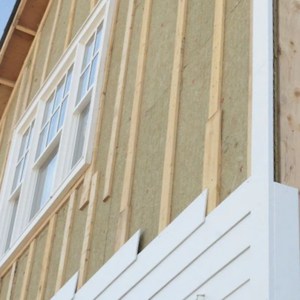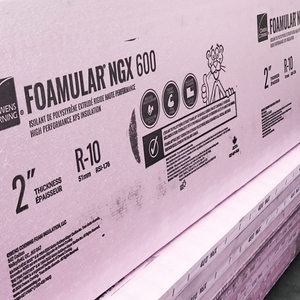
Extruded polystyrene (XPS) board insulation has several desirable properties. Its low vapor permeability, low moisture absorption, and high crush strength make it well-suited for below-grade applications. Its R-value—5.0 per in.—allows it to meet cold-climate code requirements for under-slab insulation with a single, 2-in. thick layer.
But, until recently, the XPS available in North America had a major drawback: its blowing agent—the gas that expands to create the pockets that give it its insulating properties—was a hydrofluorocarbon, HFC-134a. Also used as a refrigerant in appliances and automotive air conditioners, HFC-134a is a potent greenhouse gas. Its 100-year global warming potential (GWP) is 1430; over a 100-year period, a pound of HFC-134a released into the atmosphere will cause more than 1400 times as much warming as a pound of carbon dioxide (all GWP values listed in this article are based on a 100-year timeframe).
Reducing emissions of HFCs and other atmospheric super pollutants is critical to slowing climate change. Blowing agents account for about 9% of HFC production in North America. In contrast to heat pumps, air conditioners, and appliances, in which HFCs are kept in sealed circuits, there is no practical way to recover the HFCs in foam. Some escapes during manufacturing, and more off-gases from the foam over its working life and after disposal. Eventually, it all ends up in the atmosphere.
HFC-134a’s high GWP has led many green builders to shun XPS in favor of expanded polystyrene (EPS) and polyisocyanurate (polyiso). The blowing agent for these foams, pentane, has a GWP of 7. But, in some applications where XPS shines, these foams fall short. Polyiso is not suitable for ground-contact applications such as sub-slab and exterior foundation insulation. Its R-value drops off at low temperatures so that in colder climates, R-5 per in. XPS outperforms nominal…
Weekly Newsletter
Get building science and energy efficiency advice, plus special offers, in your inbox.

This article is only available to GBA Prime Members
Sign up for a free trial and get instant access to this article as well as GBA’s complete library of premium articles and construction details.
Start Free TrialAlready a member? Log in















3 Comments
Very helpful and informative article Jon. Disgusted with our weak legislation around this issue in Canada, but if we avoid the Cdn DuPont Grey and purchase either Foamular NGX or GreenGuard LG, it sounds like we’ll be moving in the right direction.
Have you used any of the neopore style EPS? I've been using halo brand for a couple years, and honestly prefer it, both from a workability standpoint, as well as the continued environmental. Seems like it's still a better choice than the grey XPS I've seen on the shelves at the local supplier.
Thanks Jon. Another interesting and useful blog.
Log in or become a member to post a comment.
Sign up Log in